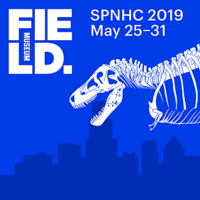SPNHC2019 Collecting Measures of Success: Difference between revisions
No edit summary |
|||
| Line 99: | Line 99: | ||
===Resources=== | ===Resources=== | ||
* [https:// | * [https://bionomia.net/ Bionomia] formerly Bloodhound | ||
* See [[Media:5292019_1600_Bloothoofd_SY06_SlideDiSSCoJeroen.pdf|how many collections, and what kind of collections]] will be mobilized by [https://dissco.eu/ DiSSCo]. | * See [[Media:5292019_1600_Bloothoofd_SY06_SlideDiSSCoJeroen.pdf|how many collections, and what kind of collections]] will be mobilized by [https://dissco.eu/ DiSSCo]. | ||
* Read about [https://icedig.eu/ ICEDIG] design recommendations for DiSSCo Collections in [https://drive.google.com/file/d/1RLNwHuZn0xLZuLWTrJaKiQn8IjQXwbCE/view Design of a Collection Digitization Dashboard] - Metrics and design function recommendations. | * Read about [https://icedig.eu/ ICEDIG] design recommendations for DiSSCo Collections in [https://drive.google.com/file/d/1RLNwHuZn0xLZuLWTrJaKiQn8IjQXwbCE/view Design of a Collection Digitization Dashboard] - Metrics and design function recommendations. | ||
Latest revision as of 10:22, 29 July 2020
About this Symposium: Collecting Measures of Success
Collections and the data associated with specimens housed in collections provide a globally unique set of reference materials not available in any other format anywhere else on the planet. The institutions housing collections and related organizations need relevant metrics to support and guide continued specimen acquisition, curation, and access to said specimens and data through digitization, georeferencing, and linking (e.g. to trait data, genomic data, ...). One can create a lengthy list of why these measures are needed (purpose) and the stakeholders (individuals and organizations) who need them. Collection administrators, aggregators, foundations, curators, collection managers, educators, policy makers, funders, journals, researchers - particularly taxonomists, space planners, all require data about collections, collections data, and the uses of and accessibility of these resources. A robust list of use cases for these metrics would take many pages. Have a look at the Use Cases gathered by the CD community at TDWG, who are working on developing a standard for sharing collections-level metadata. In this symposium, we aim to discuss the current metrics being collected, what metrics are needed, and who needs them. In addition, we would like to generate a conversation about metrics we could amass collectively, across collections, across the world. Some efforts to do this at least at some given level, are in progress. We hope you will join us at SPNHC 2019. If you have ideas and would like to contribute to this conversation, please let us know.
| Quick Links for SPNHC 2019 Symposium: Collecting Measures of Success | |
|---|---|
| Symposium Abstract | |
| Symposium Schedule | |
| Collection Metrics Resources | |
| Blog Post about this Symposium | |
Organizers
Deborah L. Paul, David P. Shorthouse, Shelley A. James
General Information
Full title: Collecting Measures of Success
When: 29 May 2019, Wednesday, 1 - 6 PM CDT
Where: SPNHC 2019 at the Field Museum in Chicago, Illinois, USA
Organizers Deborah Paul (iDigBio), Shelley James (RBGS), and David Shorthouse (CMN, Ag-Canada)
Contact: dpaul AT fsu DOT edu for questions
Symposium Abstract
Biocollections and collections data facilitate many important activities including research, curation, education, outreach, and policy-development. While the value of collection objects and related data seems obvious for those using them, it is often difficult to gather metrics needed to convey and communicate collections-related activities and their importance. Tracking and reporting on the myriad of activities going on in collections is time-consuming and often not coordinated or automated. Comparing metrics across departments and across institutions offers valuable insights but is not easy to do with current infrastructure, standards, or policy. To do this, consistency on what to count and report is increasingly important both within and across institutions.
Whether a curator, manager of collections or data, researcher or technician, natural history collections staff are pressured to provide quantitative and qualitative assessments of the value and importance of the specimens along with the associated data that is generated, improved, and shared. In addition, individuals and institutions have a need to measure and attribute often unrecognized collections activities, from the identification of a specimen, georeferencing of a collection event, to the number of specimens gathered by a collector and used in downstream research. Even social media comes under the metric spotlight. The type of metric needed for reporting is audience dependent, and can range from directors and administrators, funding agencies, to managers and individuals monitoring career progress. Delivery of metrics by aggregators of biodiversity data requires careful analysis and interpretation. Choosing appropriate, consistent and meaningful metrics, efficiently harvesting values, and being able to visualize success (or issues) in appropriate ways, is challenging and often changing with technological advancements and public perceptions. In this symposium, speakers will share stories and strategies, of metrics readily available, in development, and only just dreamt about. We also plan to encourage those attending to share their metrics stories.
Symposium Schedule
Measures of Note
We will attempt to create a list of what people/groups are measuring, how, and for whom and what purpose.
- What does SPNHC measure?
- A look at some SPNHC membership metrics. by Suzanne Ryder, Chair SPNHC International Relations Sessional Committee
- What do SPNHC members measure?
- What is needed? Any common metrics? Where to share them and how?
Resources
- Bionomia formerly Bloodhound
- See how many collections, and what kind of collections will be mobilized by DiSSCo.
- Read about ICEDIG design recommendations for DiSSCo Collections in Design of a Collection Digitization Dashboard - Metrics and design function recommendations.
- The Visible Impact of Natural History Collections: Death by a Million Acknowledgements. Christopher J Marshall. 2019 Entomological Collections Network Meeting. Abstract in ECN Progam
- Get your ORCID
- Joint TDWG/RDA group on metadata standards for attribution of physical and digital collection stewardship GitHub Repository
- FishfindR.net Compare digitized fish collections worldwide, see what's unique, find out who has what, where, and see what's missing too.
- 2018 University of Michigan Herbarium (MICH) and University of Michigan Museum of Zoology (UMMZ) Annual Report
- Shining a New Light on the World’s Collections - read about various efforts worldwide to better grasp and visualize our collections resources and human capital investment and expertise.
